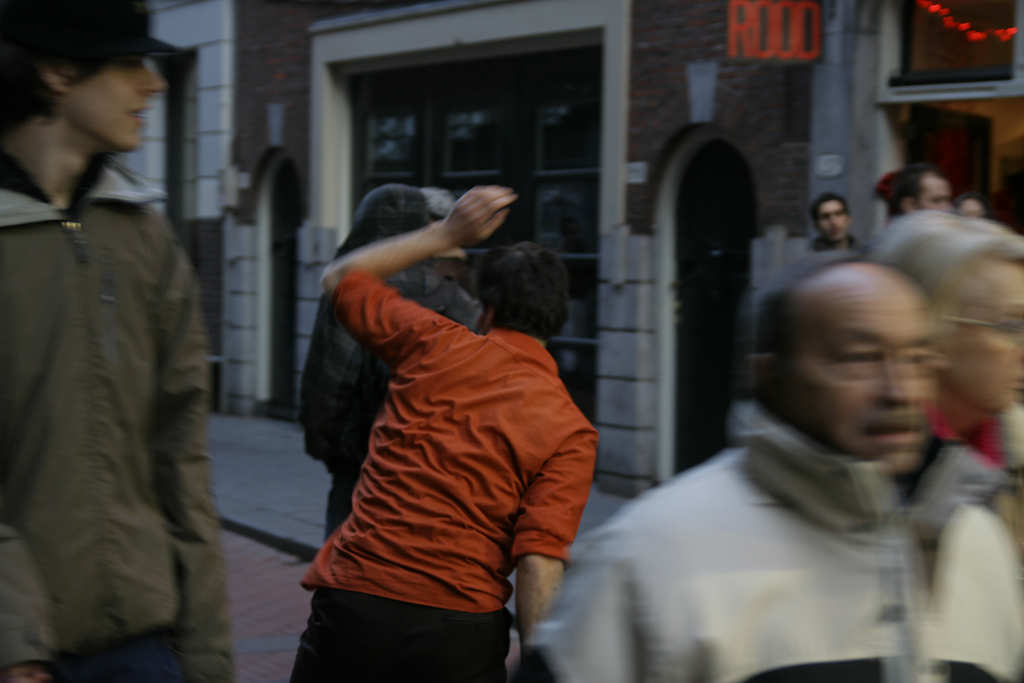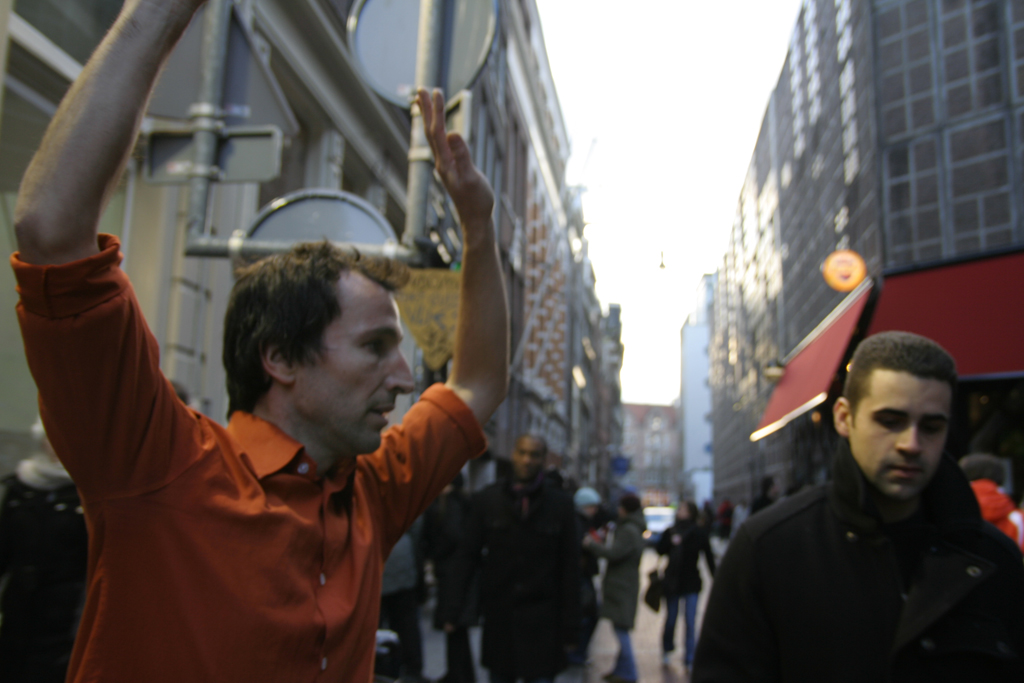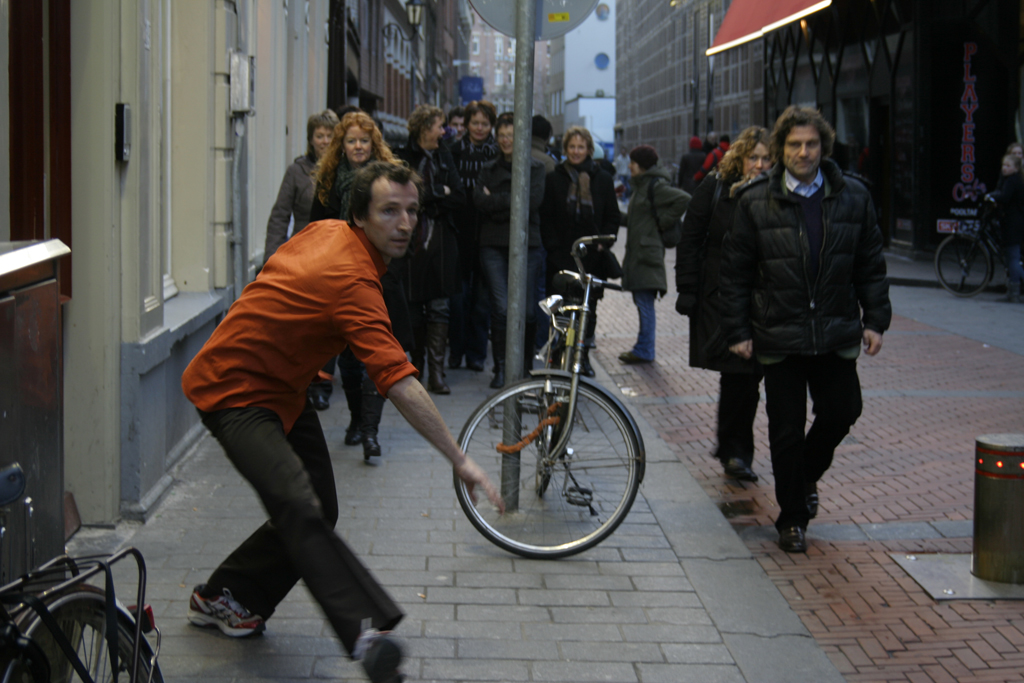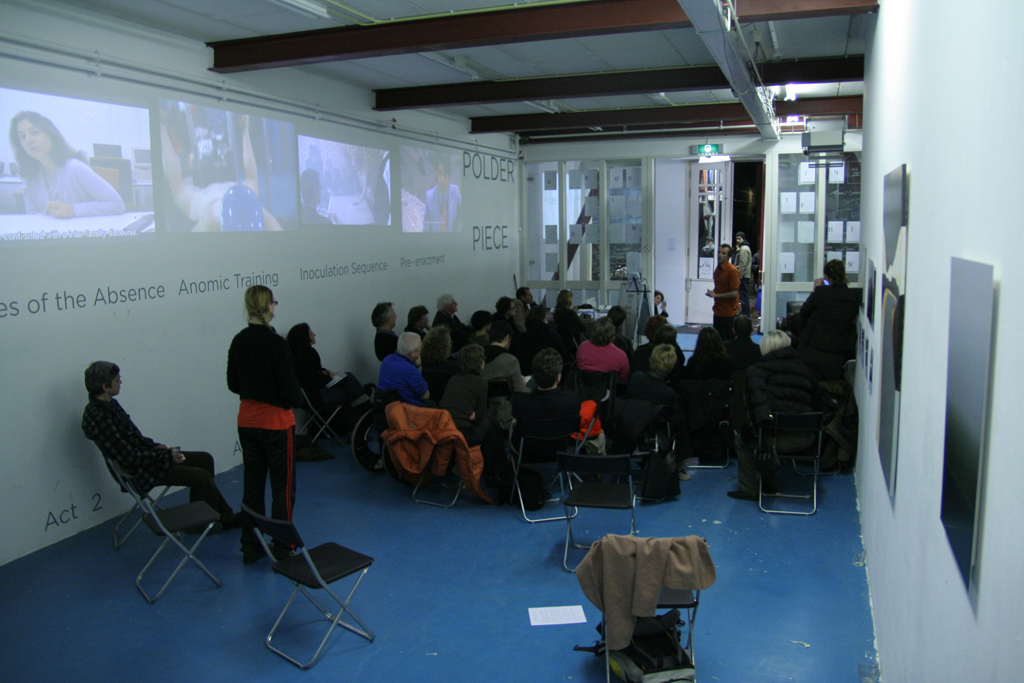Grounding Shifts On Shifting Grounds
Artistic research, Gallery W139, Amsterdam 2009
In connection with Joa Hugs final project and thesis “Grounding Shifts On Shifting Grounds” in Artistic Research, presented in gallery W139, Amsterdam. Nl, I was invited to develop an additional research collaboration with him over a period of 6 weeks.
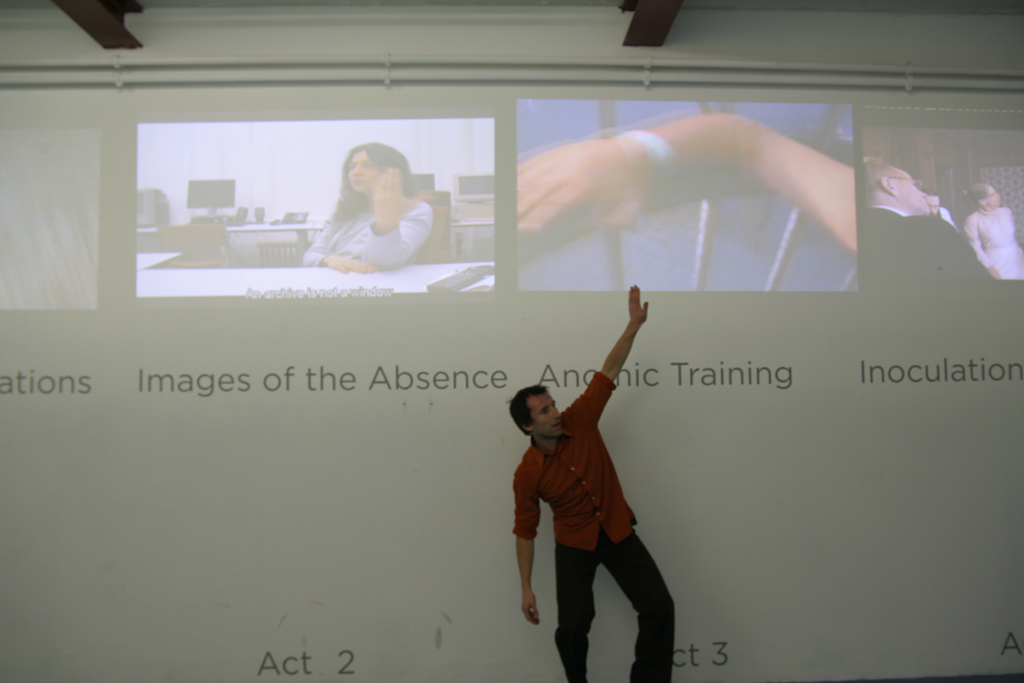 The result of the collaborative research are works in a series of motion studies exhibited at the gallery and a found in the streets. Our experiments can roughly be diveded between an “internal” work, consisting of a range of psysical exercises and its translation into external visual explorations.
The result of the collaborative research are works in a series of motion studies exhibited at the gallery and a found in the streets. Our experiments can roughly be diveded between an “internal” work, consisting of a range of psysical exercises and its translation into external visual explorations.
This interdisciplinary constellation between epistemological based research combined with a visual fine arts approach has later proved to me as a versatile approach to develop tools for varying artistic processes.
The visual explorations focus on how to translate the continuous movement of the body in a manner that captures the performers experience as well their penetration of the surrounding space. By isolating discreet gestures, the recordings attempt to develop distinct, fluid delineations of bodily motion. In so doing the investigation expand upon existing understandings of both the body’s internal motivations and, by extension, its perceptive nature.
In its narrowest sense, the work aims to be investigative. Epistemology takes preference over style. Due to the shifted dimensionality, new images come to light. And with the new images comes a new, emergent aesthetic system. Taken together with the desire for a dialogue with apparent inner and external social convictions in order to challenge perception is the closely focused aspects that constitute the visual ambition of the work.
We have been applying different rules directed to challenge our mechanisms of perception through physical enabling restrains.
1) Applying an appointed set of movement of focus patterns on the basis of a split viewpoint to perform an audio visual recording which could shift the spatial and temporal dimensions of the image.
2) Investigating stillness
How does the body perceive space in a passive state, where movement is being imposed externally and objects are included in the posture on an equal level as the body itself? How does the space perceive the body differently, when the body is acting like an object?
Working with long exposure still photography to examine the movement of the dance solo in w139 representing the passage of time. Joa’s gestures are registered continually as they traverse through the street and the notion of producing seismographic readouts of movements frozen in past time in which fragmented body parts reveal the discrete yet continouous patterns of the gestures themselves.


